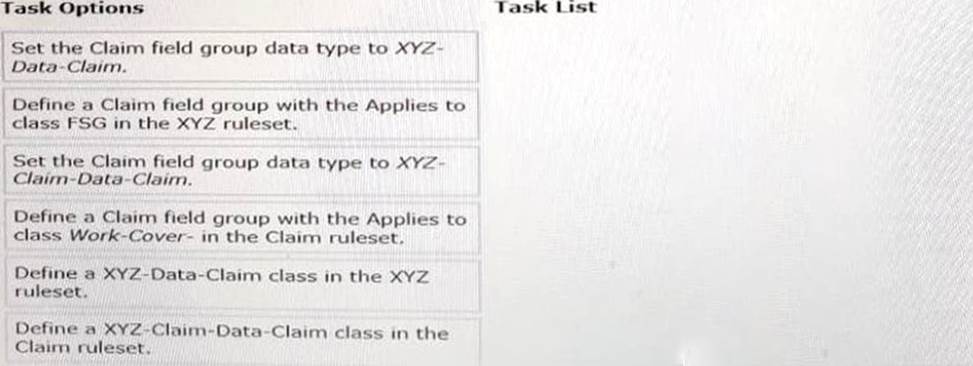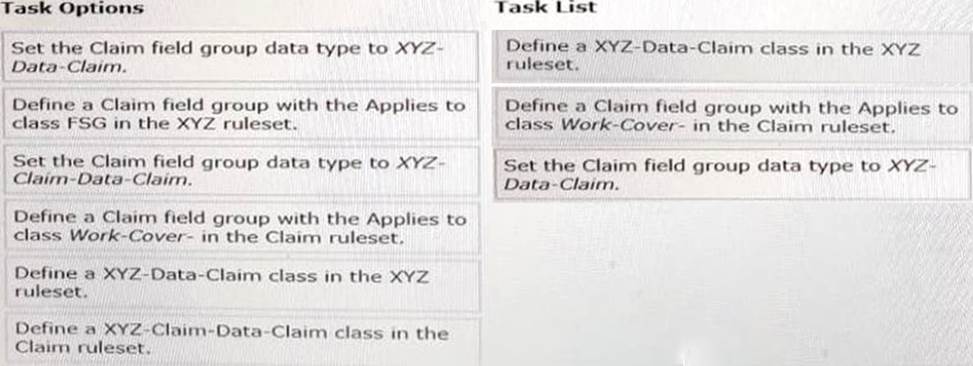Pegasystems PEGAPCLSA85V1 Lead System Architect (LSA) Pega Architecture Exam 85V1 Online Training
Pegasystems PEGAPCLSA85V1 Online Training
The questions for PEGAPCLSA85V1 were last updated at Feb 15,2025.
- Exam Code: PEGAPCLSA85V1
- Exam Name: Lead System Architect (LSA) Pega Architecture Exam 85V1
- Certification Provider: Pegasystems
- Latest update: Feb 15,2025
An application contains cases which transition though different statuses throughout their life cycle which typ.ca, months.
Design a reporting strategy to display the number of cases by status at the end of each month for a 12 month period.
- A . Configure an agent to record monthly case status in a separate table and report on that table.
- B . Configure an activity to generate the data in the clipboard and report using a custom section.
- C . Configure a summary report that leverages sub reports for each month.
- D . Configure a Declare index to record case data to a separate table.
While configuring GetNextWork, overriding the System Settings rule GetNextWork__WorkBasketUrgencyThreshold imposes a minimum cutoff value for assignment urgency.
Which statement accurately depicts the system behavior when the GetNextWork_WorkBaseketUrgencyThreshold setting is overridden?
- A . The override ignores other criteria in GetNextWork.
- B . The override causes the application to revisit workbaskets for assignments with lower urgency.
- C . The override causes a search of only those assignments with the urgency higher than the threshold value.
- D . The override causes a search of all assignments in a work queue that equal or exceed the set urgency threshold.
XYZ Corp requires employees to designate alternate operators to perform their work while they are on vacation. Work vacationing operators should be visible to alternate operators.
How do you configure the application to handle this requirement?
- A . Add a ValueList Property to Data Admin-Operator-ID. Alternate operators add vacationing persons to their ValueList. Modify the Assign Worklist report definition to include this ValueList. Modify security accordingly to allow access.
- B . Modify the user portal to only display team members for which the operator has been designated an alternate. Clicking on an operator displays that operator’s worklist. Assignments are opened accordingly.
- C . Define a custom Access When rule named pxAssignedToMeOr Alternate. Modify the pyUserWorkList Report Definition using this rule to display every Assign-Worklist assignment within the WorkGroup.
- D . Develop an agent that transfers worklist assignments from the operator going on vacation, when that vacation starts, to the alternate operator. When vacation ends, transfer uncompleted assignments back.
DRAG DROP
XYZ Inc.’s COE wants case life cycle developers to use a field group named "Claim" regardless of the application being developed.
Select and move the three tasks that the COE performs for this requirement to the Task List column and place them in the correct order. (Choose Three)


A shipping case needs to wait n specific time period before progressing in its flow. The developer is considering using ;i wait shape or an assignment with an SI A to perform this (unction.
Identify the two requirements for which a wait shape is the simpler approach. (Choose Two)
- A . Adjust the case urgency when the assignment is created.
- B . Manually step past the waiting point prior to the designated time.
- C . Present a custom UI form to the user while waiting to expire.
- D . Automatically bypass locking when the assignment is created.
APP Studio created a data type in the Organization layer for Quote data called BCO-Data-Quote.
How do you help users find rules from this data class when working in APP Studio?
- A . Create a BCO-QI-Data-Quote class that inherits from BCO Data-Quote.
- B . Use a Data Reference to configure the rules that you need from the BCO Data Quote class.
- C . Copy the fields in the data class to the BCO-QT Work- class so all subclasses can see the Quote rules.
- D . Select each rule you want to reuse in the application as a relevant record.
What two recommendations do you provide to the development team to ensure the performance of the Pega application does not degrade over time? (Choose Two)
- A . Add indexes to all columns.
- B . Purge workparty UUI index tables periodically.
- C . Schedule scripts to maintain frequently fragmented tables.
- D . Purge and/or archive records based on the company’s record retention policy.
Security policies need to be configured for a newly developed Pega application using basic credential authentication. The lockout policy configuration must lock out users after three failed login attempts. The configuration must exclude Administrator or Executive operators from the lockout.
How do you achieve this requirement?
- A . Define operator override setting in enterprise authentication system
- B . Create a separate role for Admin Executives
- C . Use Exclude Operators options in Security Policies landing page
- D . Define Access Control Policy to exclude Admin Executives
What are two valid reasons for defining a case type within a case type-specific ruleset? (Choose
- A . Case-specific rulesets make it easier to rebase ruleset versions.
- B . Each branch ruleset can be associated to case-specific user stories.
- C . The ruleset can be added to the ruleset stack for multiple applications.
- D . The case type might be converted to a component application in the future.
Table a contains customer information. Table B contains complaints submitted by customers. Table C contains positive feedback submitted by customer.
You are tasked to write a report that list all rows in Table A where, per customer, the number of rows in Table B related to Table A are greater than the number of rows in Table C related to table A.
Which method creates the report that executes with the best performance?
- A . Define two subreports: one that counts rows in Table B relative to Table A, and on that counts the rows in table C relative to Table A. Only include rows in the main. Report against table A where the table B count is greater that the Table C count.
- B . Join table A to Table B and C using include all rows in this class. Count the Join column from both Table B and Table C. Only include rows where the first count is greater than the second.
- C . Join table A to Table B and C using include all rows in join class. Count the Join column from both Table B and Table C. Only include rows where the first count is greater than the second.
- D . Define two subreports, one where table B users ”Do not Join”, and one where Table C users ”Do not Join”, In the main report count the rows from each subpreport, then only include rows where the count from the Table B subreport than the count from the Table C subreport.
Latest PEGAPCLSA85V1 Dumps Valid Version with 92 Q&As
Latest And Valid Q&A | Instant Download | Once Fail, Full Refund

